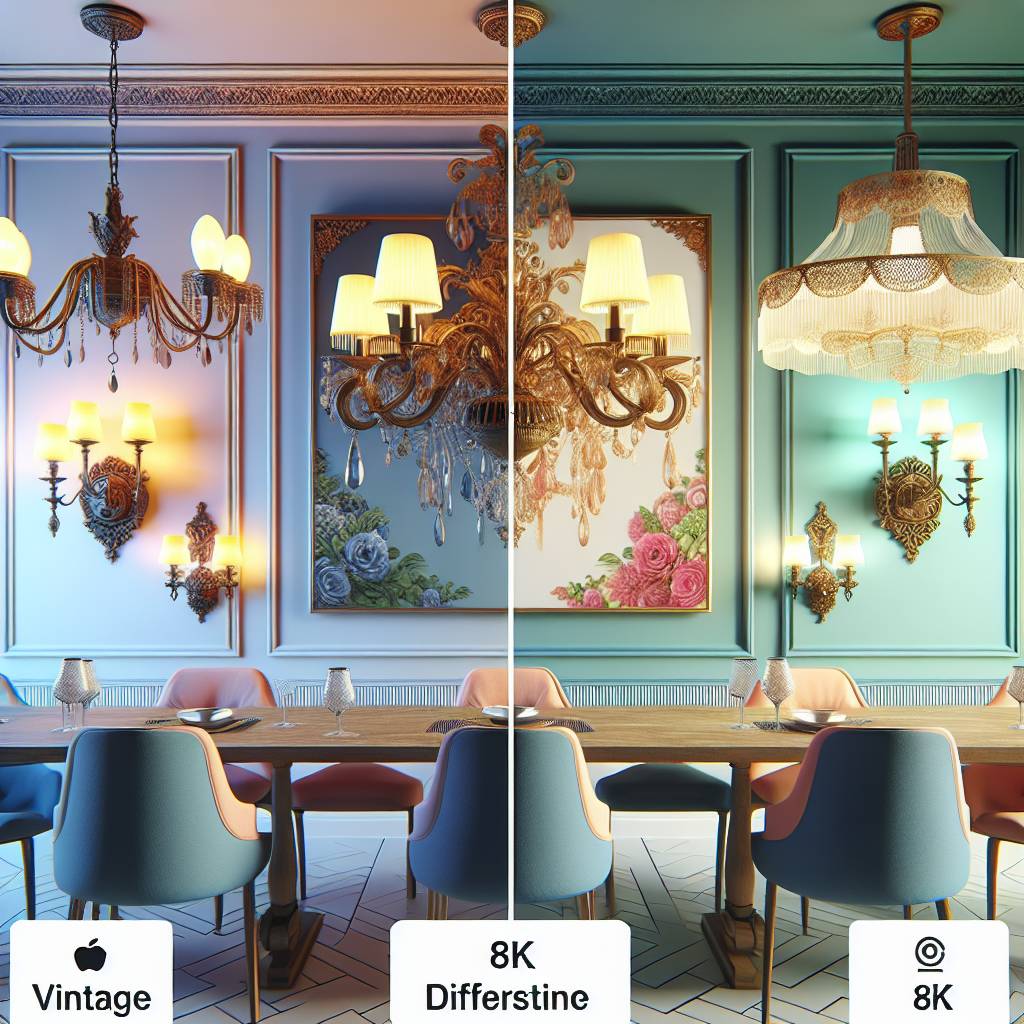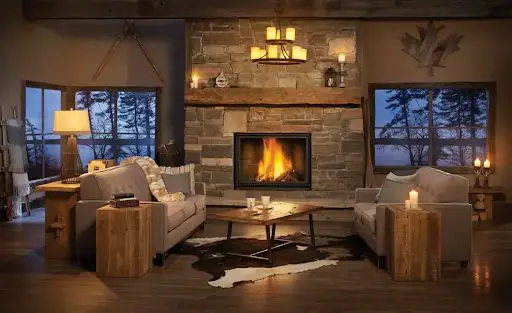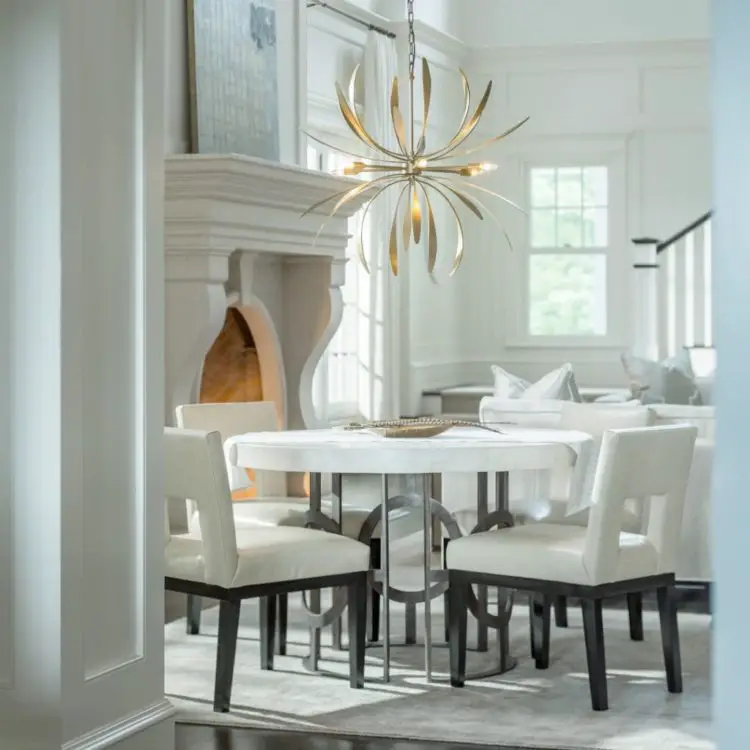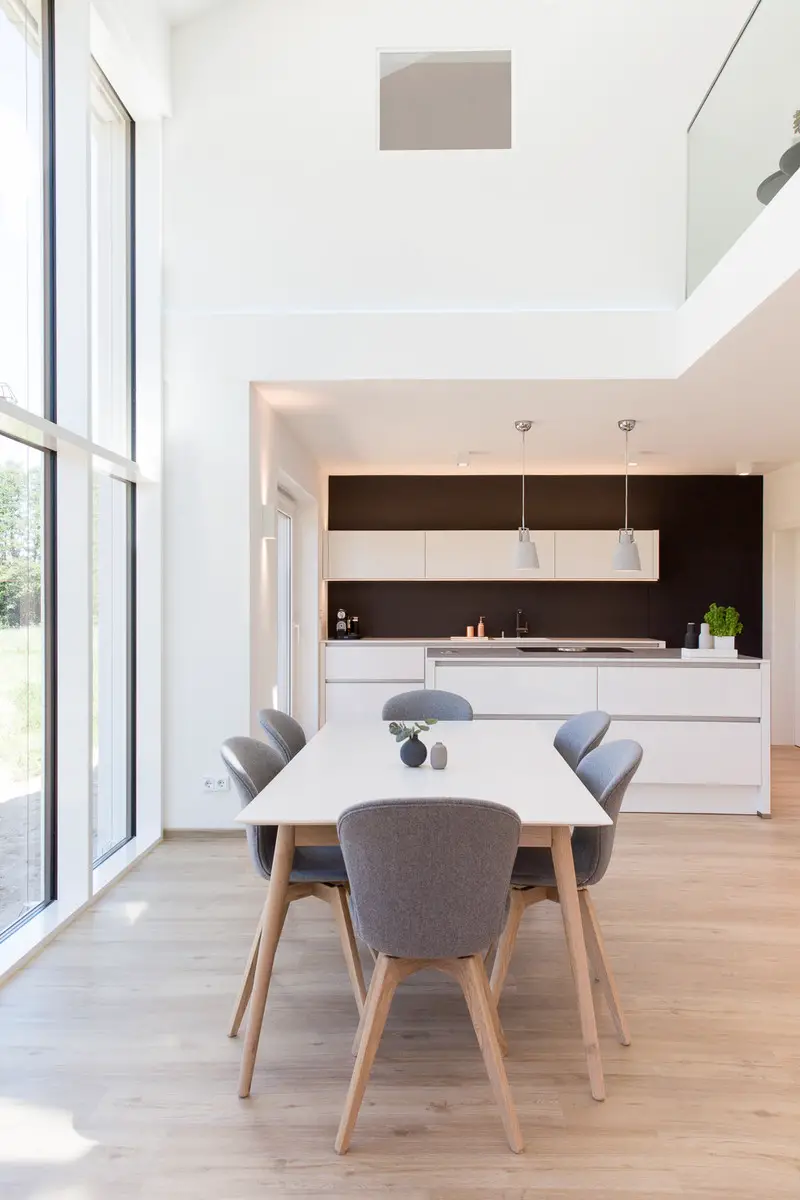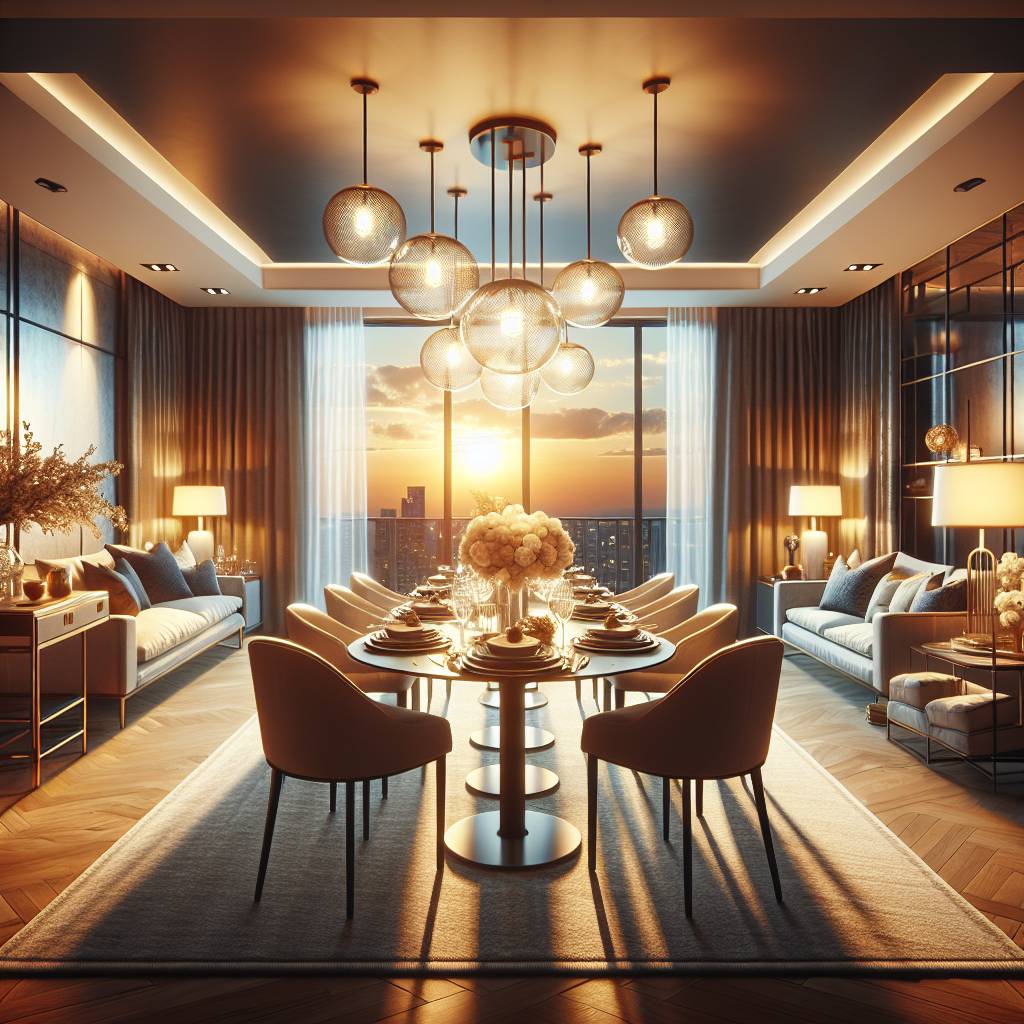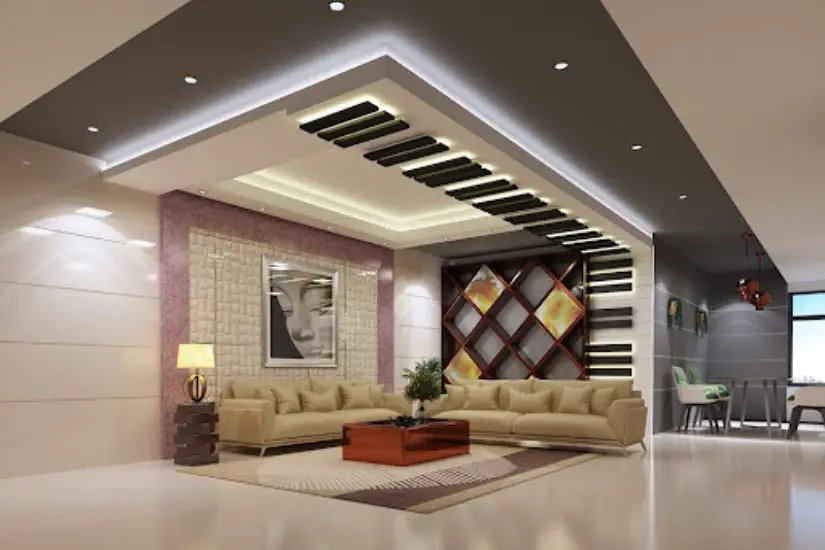Did you know that lighting can significantly impact the ambiance of a dining room? Whether you prefer the timeless elegance of vintage fixtures or the sleek, contemporary look of modern lighting, your choice sets the tone for your dining space.
From classic chandeliers to minimalist pendant lights, each style brings its own unique flair to a dining area. We’ll delve into the characteristics of both vintage and modern lighting designs, shedding light on their distinct features and how they contribute to creating an inviting atmosphere in your home. So, if you’re contemplating a lighting upgrade for your dining room but are unsure which direction to take, read on as we illuminate the pros and cons of these contrasting design choices.
Key Takeaways
- Consider the ambiance and aesthetic you want to create in your dining room when choosing between vintage and modern lighting styles.
- Evaluate the practical aspects such as energy efficiency and maintenance requirements before making a decision on the lighting style.
- Blend vintage elegance with modern illumination by incorporating creative fixture ideas that reflect your personal style and preferences.
- When selecting the right lighting style, prioritize functionality and visual appeal to ensure a well-lit and inviting dining space.
- Whether opting for vintage or modern lighting, remember that the key is to create a welcoming and visually appealing dining room that suits your taste and lifestyle.
- The choice between vintage and modern dining room lighting styles should ultimately align with your personal preferences and the overall design scheme of your home.
Defining Vintage Lighting
Vintage lighting styles have evolved significantly over the decades, reflecting the cultural and historical trends of each era. For example, in the early 20th century, Art Deco lighting emerged with its geometric shapes and luxurious materials. This style was influenced by the technological advancements and creative freedom of the time. In contrast, mid-century modern lighting from the 1950s and 1960s embraced clean lines, organic forms, and innovative materials like plastic and aluminum.
As for modern lighting, it has drawn inspiration from these vintage styles while incorporating contemporary elements to suit current design preferences. The sleek minimalism of modern interiors often calls for simple yet striking light fixtures that complement rather than overpower the space. By understanding these historical influences on both vintage and modern lighting, homeowners can make informed choices when selecting fixtures for their dining rooms.
Understanding Modern Lighting
Contemporary Designs
Modern lighting encompasses a wide range of styles, from sleek and minimalist designs to vintage-inspired contemporary fixtures. Sleek and minimalistic modern lighting often feature clean lines, geometric shapes, and neutral colors. For example, pendant lights with simple cylindrical shades or chandeliers with straight arms and no ornate detailing are popular in modern dining rooms.
On the other hand, vintage-inspired contemporary fixtures combine elements of both old and new styles. These may include traditional materials like brass or bronze but with a modern twist in their design. They can also incorporate unique shapes and forms that provide a nod to the past while embracing present-day aesthetics.
Technological Integration
One significant aspect that sets modern lighting apart is its integration of smart features. This includes functionalities such as dimmable lights, color-changing capabilities, remote control operation, and compatibility with voice assistants like Alexa or Google Home. Such smart features and light sources offer convenience and customization options for homeowners seeking to create different moods within their dining spaces.
In terms of wiring and circuitry, there’s a notable shift from traditional setups to more advanced systems in modern lighting. Traditional wiring relied heavily on manual switches whereas modern setups often involve sensors, timers, motion detectors, or even wireless connectivity for seamless control of light.
Moreover, technology has significantly impacted the functionality of modern dining room lighting. LED technology has revolutionized energy efficiency while providing various options for brightness levels and color temperatures. Advancements in light materials have allowed for innovative designs that were not feasible before.
Key Differences Explored
Aesthetic Contrasts
When comparing vintage and modern dining room lighting styles, it’s essential to consider the aesthetic differences. Vintage lighting often features ornate details, intricate designs, and warm hues. In contrast, modern lighting embraces clean lines, minimalistic designs, and a neutral or monochromatic color palette. For example, a vintage chandelier might have decorative metalwork with warm brass or copper tones, while a modern pendant light could showcase sleek geometric shapes in black or white finishes.
Balancing visual appeal with functionality is crucial when choosing between vintage and modern dining room lighting styles. Vintage fixtures may offer an elegant charm but could be less practical for contemporary living spaces due to their ornate nature. On the other hand, modern lighting prioritizes functionality without compromising on style. This means that while vintage lights may create a cozy ambiance reminiscent of a bygone era, modern fixtures provide versatile options that seamlessly integrate into various interior design themes.
Functionality Variances
The practicality of vintage lighting in modern settings can pose challenges due to its specific design elements and limited adaptability. Vintage chandeliers or sconces may not always align with the electrical requirements of today’s homes or the desired ambiance of a modern dining space. Maintenance and repair of vintage fixtures, including light, can be more complex compared to their modern counterparts.
In contrast, modern dining room lighting offers versatility and adaptability tailored to contemporary lifestyles. Modern light fixtures are designed with user-friendly features such as adjustable brightness levels, energy-efficient LED technology for cost-effective illumination solutions.
Impact of functionality on user experience cannot be overlooked when deciding between vintage vs modern dining room lighting styles. While vintage lights evoke nostalgia and timeless elegance in traditional settings like Victorian-themed dining rooms or classic interiors inspired by mid-century design movements; they might not meet the functional demands of today’s dynamic living spaces where multipurpose rooms are common.
Selecting the Right Style
Space Considerations
Space considerations play a crucial role in determining the most suitable option. Adapting vintage light fixtures to smaller dining areas can add a touch of elegance and character. For instance, a petite chandelier or an antique pendant light can bring warmth and charm to a cozy nook. On the other hand, modern lighting is well-suited for larger spaces, offering sleek designs that complement expansive dining rooms. The importance of scale and proportion cannot be overlooked in both styles. Vintage fixtures should not overpower small spaces, while modern lighting must fill larger areas without appearing disproportionate.
Vintage fixtures and light are ideal for creating a cozy ambiance in the dining room. Their warm glow and intricate designs contribute to an inviting atmosphere that encourages intimate gatherings and leisurely meals. For example, a wrought iron chandelier with candle-style lights can evoke old-world charm, perfect for traditional or rustic settings. Conversely, modern lighting is adept at infusing a more contemporary feel into the dining space through clean lines and minimalist aesthetics. By using dimmable LED pendant lights or geometric chandeliers, one can achieve a stylish ambiance that suits modern interior design preferences.
Vintage Elegance
Chandeliers
Vintage dining room lighting often features ornate chandeliers that exude elegance and charm. These statement pieces add a touch of old-world glamour to the dining area, creating a warm and inviting ambiance with light. They come in various sizes and styles, making it easy to find one that perfectly complements different dining room layouts.
Modern chandelier designs, on the other hand, offer a sleek and contemporary look with light. With clean lines and minimalist aesthetics, they can elevate the overall modern feel of the space while still providing ample illumination. Whether you have a compact dining nook or an expansive formal dining room, there are modern chandelier options to suit every setting.
Vintage vs modern chandeliers cater to different tastes and interior design preferences. For instance, if your dining area boasts classic vintage furniture pieces like an antique oak table or Victorian-style chairs, an ornate vintage chandelier would complement this traditional aesthetic beautifully. Conversely, if your space features streamlined furniture with clean silhouettes and neutral tones, a modern chandelier could be the perfect finishing touch for achieving that sleek look.
Pendant Lights
. They bring character to the space while offering gentle ambient lighting for intimate meals or lively gatherings. Their versatility in placement allows them to be arranged creatively above various table shapes without overpowering the room’s decor.
On the other hand, modern pendant light designs embrace simplicity with their clean lines and understated elegance. They contribute to a more minimalistic vibe in contemporary interiors by providing focused task lighting without overwhelming visual elements.
In choosing between vintage vs modern pendant lights, consider how they will harmonize with your existing decor style and layout preferences. For example, if you have a farmhouse-inspired dining area adorned with rustic wooden accents and earthy tones, vintage pendant lights can enhance this cozy atmosphere effortlessly. In contrast, if your space showcases Scandinavian-inspired furnishings characterized by simplicity and functionality, modern pendant lights would seamlessly integrate into this uncluttered setting.
Modern Illumination
Smart Lighting
Light sources have come a long way, especially with the integration of smart features into vintage-style fixtures. These modern advancements bring about convenience and energy efficiency to dining room lighting. With smart lighting, homeowners can control the ambiance and brightness using their smartphones or voice commands, offering customizable options for different dining room needs.
Smart lighting also offers benefits such as scheduling, where lights can be programmed to turn on or off at specific times. This is particularly useful for creating an inviting atmosphere during dinner parties or family gatherings. The energy-efficient nature of smart lighting contributes to cost savings in the long run while reducing environmental impact.
For example, imagine having a vintage chandelier equipped with smart technology that allows you to dim the lights for a romantic dinner or brighten them up for a lively brunch with friends.
LED Innovations
LED technology has revolutionized modern illumination by offering significant energy-efficient benefits. LEDs consume less power than traditional incandescent bulbs, resulting in lower electricity bills and reduced environmental impact due to decreased energy usage.
Moreover, retrofitting vintage fixtures with LED options provides an opportunity to maintain the classic aesthetic appeal while benefiting from modern efficiency. Homeowners can enjoy the charm of vintage dining room lighting styles without compromising on sustainability and cost savings associated with LED innovations.
Consider updating an antique pendant light fixture with LED bulbs that not only preserve its retro look but also deliver enhanced brightness and longevity compared to conventional incandescent bulbs.
Practical Considerations
Energy Efficiency
Modern lighting fixtures have a clear advantage. They are designed to be more energy-efficient, consuming less electricity than their vintage counterparts. This not only helps reduce utility bills but also minimizes the environmental impact of excessive energy consumption. Balancing aesthetics with eco-friendly choices is crucial when considering dining room lighting styles. While vintage fixtures may exude charm and character, they often lack the energy-efficient features found in modern options.
Retrofitting vintage fixtures for improved efficiency is an option worth exploring. By replacing old incandescent bulbs with LED bulbs, you can significantly enhance the energy efficiency of vintage lighting fixtures without compromising their classic appeal. Installing dimmer switches can further improve energy efficiency by allowing you to adjust the brightness according to your needs and mood.
Bulb Selection
Selecting the right bulbs for vintage fixtures is essential in achieving both visual appeal and functionality. Vintage fixtures often require specific types of bulbs that may not be as readily available as modern ones. It’s important to consider factors such as size, shape, and wattage compatibility when choosing bulbs for vintage lighting.
On the other hand, modern bulb options offer a wide range of choices to achieve different ambiance goals in the dining room. From warm white light for a cozy and inviting atmosphere to cool white light for a more contemporary feel, modern bulb options provide versatility in creating the desired ambiance.
The color temperature of dining room lighting plays a significant role in setting the mood and ambiance of the space. Warm color temperatures (ranging from 2700K to 3000K) are ideal for creating a cozy and intimate atmosphere suitable for dining rooms where people gather to enjoy meals together. On the contrary, cooler color temperatures (around 3500K or higher) lend themselves well to modern dining spaces seeking a crisp and vibrant illumination.
Creative Fixture Ideas
Layered Lighting
Layered lighting involves creating depth and dimension in a dining room through the strategic use of ambient, task, and accent lighting. In vintage dining rooms, this is often achieved with the use of multiple light sources such as chandeliers, sconces, and lamps. For example, a beautiful vintage chandelier can serve as the ambient light source while wall sconces or buffet lamps provide accent lighting.
Modern techniques for achieving layered illumination involve incorporating recessed ceiling lights for ambient lighting, pendant lights or track lighting for task-specific areas like the dining table, and adjustable floor or table lamps for accentuating specific decor elements. This approach ensures that different parts of the dining room are well-lit according to their functions.
Balancing these three types of lighting is essential to create an inviting ambiance in both vintage and modern dining spaces. The key is to avoid harsh shadows and overly bright spots by distributing light evenly across the room.
Retro Integration
Retro integration refers to incorporating retro elements into a modern dining space seamlessly. In vintage vs modern dining room lighting styles, this means blending iconic retro fixtures with contemporary decor without creating a jarring contrast. For instance, pairing a sleek mid-century modern chandelier with minimalist furniture can create an intriguing juxtaposition between old and new.
Blending vintage-inspired pieces with contemporary decor involves considering factors such as color schemes, materials used, and overall design aesthetics. A cohesive look can be achieved by selecting modern furniture pieces in neutral colors that complement the warm tones often associated with vintage lighting fixtures.
Achieving harmony through retro integration requires careful curation of decorative elements such as artwork, rugs, or textiles that bridge the gap between past eras and present-day design trends. By doing so, one can create a balanced visual narrative within the dining space that pays homage to both vintage charm and modern sophistication.
Conclusion
Closing Thoughts
Congratulations on reaching the end of our journey through vintage and modern dining room lighting styles! By now, you have gained a deep understanding of the defining characteristics of each style and the key differences between them. Armed with this knowledge, you are well-equipped to select the perfect lighting fixtures that align with your personal taste and the ambiance you wish to create in your dining space.
As you embark on transforming your dining room, remember that blending vintage elegance with modern illumination can result in a truly captivating and unique atmosphere. Consider practical aspects while exploring creative fixture ideas to achieve a harmonious balance. Whether you lean towards the timeless allure of vintage or the sleek sophistication of modern lighting, trust your instincts and let your creativity shine through as you curate the perfect dining room ambiance.
Frequently Asked Questions
What are the defining characteristics of vintage lighting?
Vintage lighting is characterized by ornate designs, intricate details, and warm hues. It often features materials like brass, bronze, or glass to evoke a sense of nostalgia and timeless elegance.
How does modern lighting differ from vintage styles?
Modern lighting embraces sleek minimalism, clean lines, and innovative materials such as chrome or brushed steel. It prioritizes functionality and often incorporates energy-efficient technologies for a contemporary feel.
What practical considerations should I keep in mind when selecting dining room lighting?
Consider the size of your dining area, the height of the ceiling, and the desired ambiance. Factor in the type of bulbs needed for adequate illumination and whether dimmable options are preferred.
Can I combine vintage and modern elements in my dining room’s lighting design?
Absolutely! Mixing vintage charm with modern flair can create a captivating juxtaposition. For example, pairing a classic chandelier with minimalist wall sconces can add depth and character to your space.
Are there any creative fixture ideas that blend vintage and modern styles seamlessly?
Consider incorporating industrial pendant lights with retro filament bulbs for an eclectic yet harmonious look. Alternatively, explore geometrically inspired fixtures that merge vintage silhouettes with contemporary finishes.
